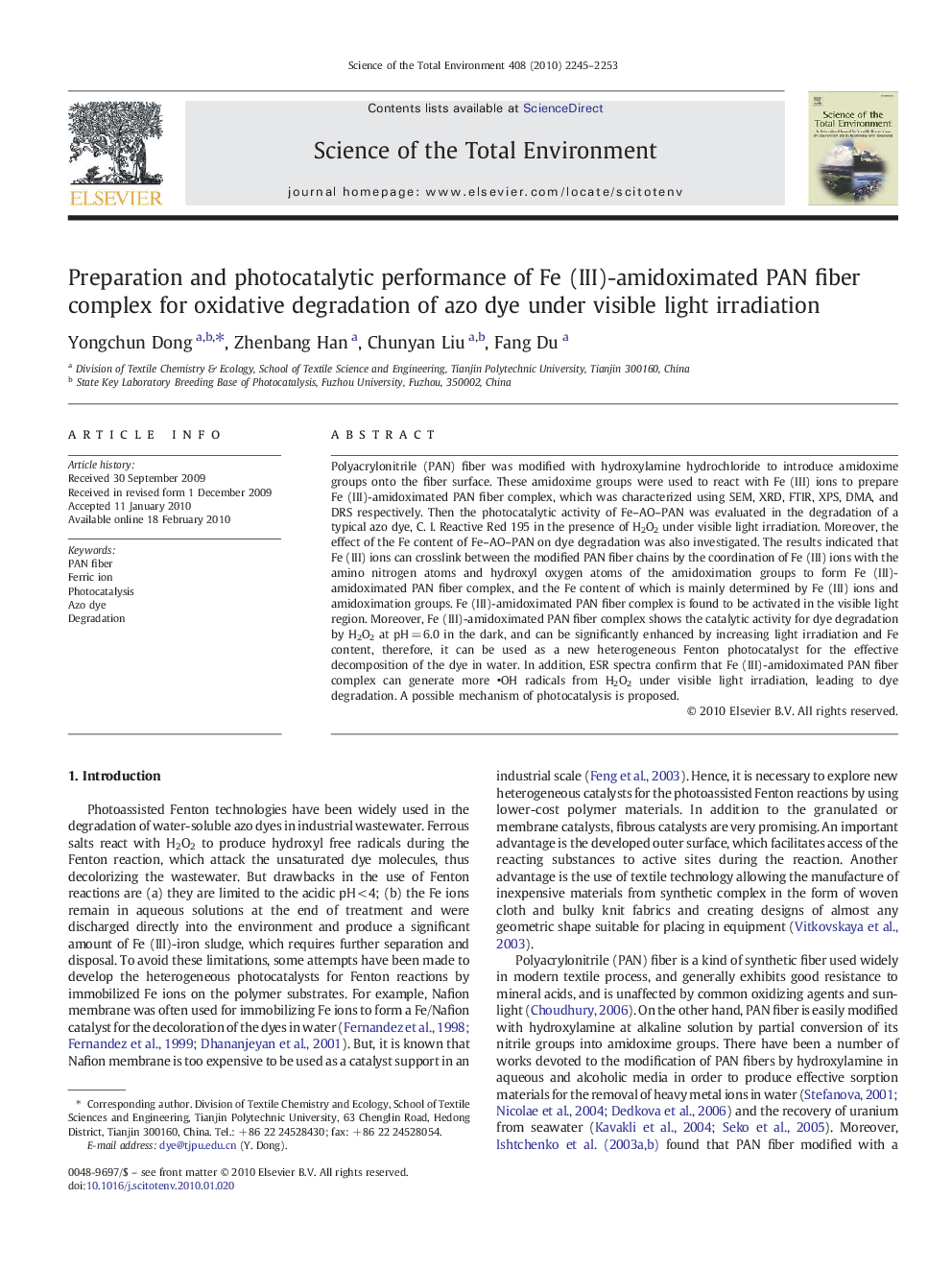| Article ID | Journal | Published Year | Pages | File Type |
|---|---|---|---|---|
| 4431687 | Science of The Total Environment | 2010 | 9 Pages |
Polyacrylonitrile (PAN) fiber was modified with hydroxylamine hydrochloride to introduce amidoxime groups onto the fiber surface. These amidoxime groups were used to react with Fe (III) ions to prepare Fe (III)-amidoximated PAN fiber complex, which was characterized using SEM, XRD, FTIR, XPS, DMA, and DRS respectively. Then the photocatalytic activity of Fe–AO–PAN was evaluated in the degradation of a typical azo dye, C. I. Reactive Red 195 in the presence of H2O2 under visible light irradiation. Moreover, the effect of the Fe content of Fe–AO–PAN on dye degradation was also investigated. The results indicated that Fe (III) ions can crosslink between the modified PAN fiber chains by the coordination of Fe (III) ions with the amino nitrogen atoms and hydroxyl oxygen atoms of the amidoximation groups to form Fe (III)-amidoximated PAN fiber complex, and the Fe content of which is mainly determined by Fe (III) ions and amidoximation groups. Fe (III)-amidoximated PAN fiber complex is found to be activated in the visible light region. Moreover, Fe (III)-amidoximated PAN fiber complex shows the catalytic activity for dye degradation by H2O2 at pH = 6.0 in the dark, and can be significantly enhanced by increasing light irradiation and Fe content, therefore, it can be used as a new heterogeneous Fenton photocatalyst for the effective decomposition of the dye in water. In addition, ESR spectra confirm that Fe (III)-amidoximated PAN fiber complex can generate more OH radicals from H2O2 under visible light irradiation, leading to dye degradation. A possible mechanism of photocatalysis is proposed.
